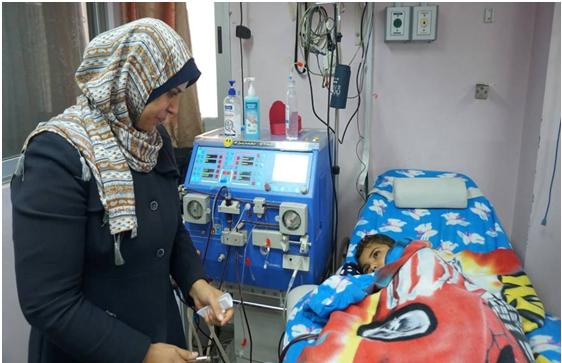Final stocks of emergency fuel will be delivered this weekend to critical facilities in the Gaza Strip, through the United Nations-assisted Emergency Fuel Program. The UN Humanitarian Coordinator, Jamie McGoldrick, has written to the donor community requesting immediate support for the program, which provides life-saving emergency fuel to operate standby emergency power generators at critical health centers, and water and sanitation facilities in the Gaza Strip. Funds donated thus far in 2018 have been depleted.

UN Humanitarian Coordinator, Jamie McGoldrick: “Some hospitals in Gaza are already within a week of closing.” (Photo: OCHA)
Life-saving services in Gaza currently depend on the UN’s delivery of emergency fuel, due to an energy crisis that leaves the two million Palestinian residents of Gaza, over half of whom are children, with only 4-5 hours of electricity from the grid per day. Based on the current electricity deficit in Gaza, a minimum of 4.5 million dollars is required to sustain these essential services until the end of the year.
“If new funds are not received immediately, we will be facing a potentially catastrophic breakdown in essential service delivery,” said McGoldrick. “Services provided at hospitals, clinics, as well as sewage treatment, water and sanitation facilities will cease. Some hospitals are already within a week of closing. The most vulnerable people of Gaza, who rely on public services and have limited income sources, will be the most negatively affected.”
Hospitals in the Gaza Strip only have enough fuel to support service provision for just over two weeks, in total, with some facilities at greater risk: Al Aqsa Hospital in the Middle Area of the Gaza Strip, for example, only has enough emergency fuel to sustain services for just under a week, putting the lives of over 500 vulnerable patients at risk each day.
These include patients being treated in intensive care; newborn babies in neonatal units; patients requiring emergency surgery; dialysis patients treated for kidney failure; and those needing emergency care. More than 4,800 patients in Gaza daily require access to lifesaving or life-sustaining health care that requires a constant supply of electricity. Of these, at least 300 are connected to life-saving medical machines such as ventilators, dialysis machines, incubators and anesthetic machines, where disruption or electricity cutout puts patients at immediate risk of brain damage or death.
Without fuel, some 300,000 people will potentially be affected by serious public health concerns as sewage could overflow onto streets. Overall, water and wastewater services are dropping to less than 20 per cent of capacity and water availability is dropping below 50 liters per capita per day, less than half of the minimum requirement according to WHO. Additionally, some essential infrastructure risks significant damage due to lack of fuel to operate key elements, with potential loss of donor investments as a result.
“The situation in Gaza is desperate. Over a decade of blockade and unresolved internal political divisions have stripped people of their rights and left over two-thirds of the population dependent on humanitarian aid,” said McGoldrick.


